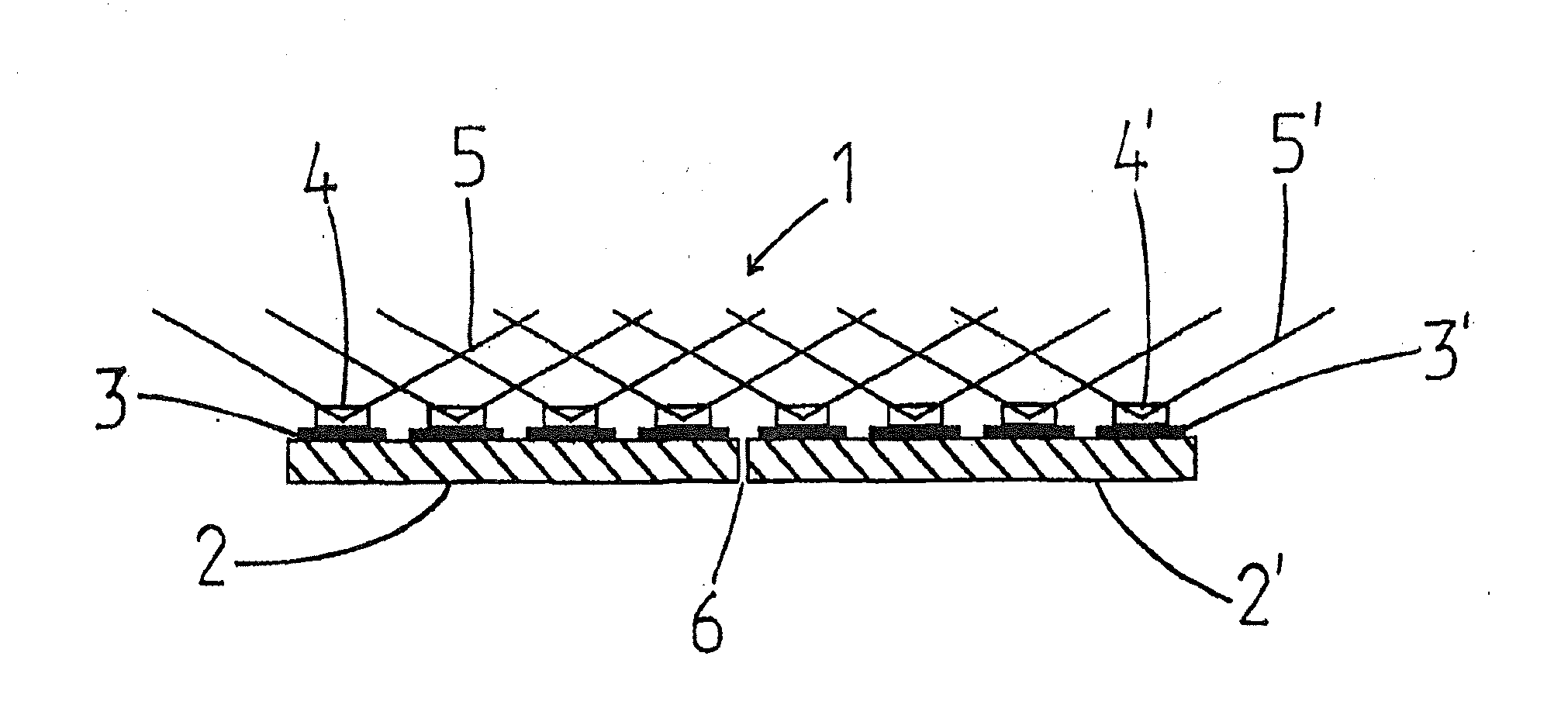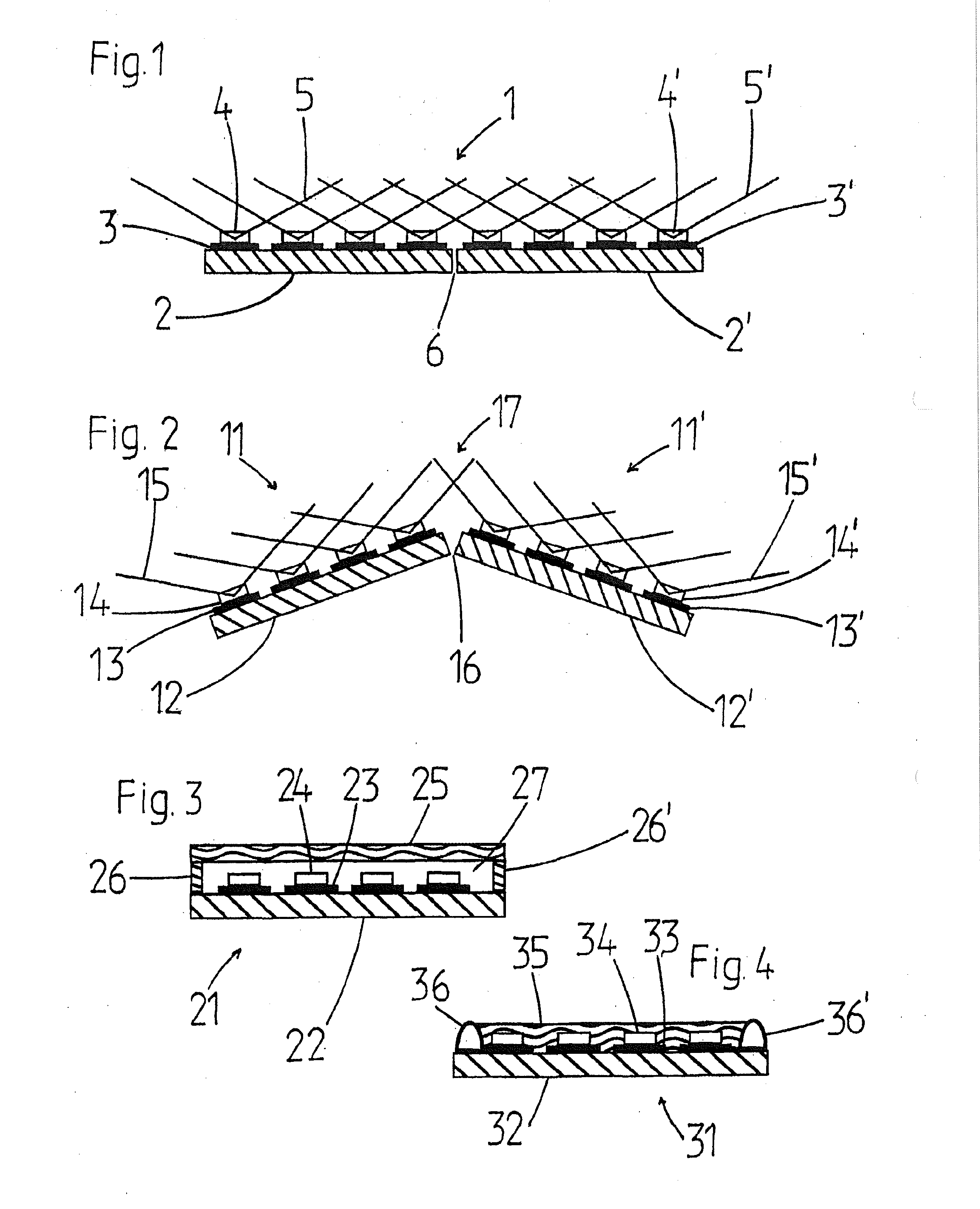LED lamp for homogeneously illuminating hollow bodies
- Summary
- Abstract
- Description
- Claims
- Application Information
AI Technical Summary
Benefits of technology
Problems solved by technology
Method used
Image
Examples
Embodiment Construction
[0064]In FIG. 1 a chip-on-board LED module 1 is shown schematically in cross section, in which strip conductors 3, 3′ and LED Chips 4, 4′ are arranged at a regular spacing on two substrates 2, 2′ arranged in parallel. One substrate 2, 2′ can be, for example, a metal core conductor plate, a ceramic substrate, or an FR4 substrate, which can be constructed using a rigid, semi-flexible, or flexible substrate technology. For reasons of clarity, not all of the repeating elements in FIG. 1 are provided with reference symbols, but these symbols refer to all equivalent elements.
[0065]The light cones 5, 5′ of the LED chips 4, 4′ are shown with lines. The LEDs are approximately Lambert radiators, which emit approx. 75% of the total emitted light power within an opening angle of 120°. A good overlap of the emission cones 5, 5′ at the boundaries of adjacent LED chips 4, 4′ is already given at spacings on the order of magnitude of the chip spacings, also called “pitch,” so that no significant int...
PUM
 Login to View More
Login to View More Abstract
Description
Claims
Application Information
 Login to View More
Login to View More - R&D
- Intellectual Property
- Life Sciences
- Materials
- Tech Scout
- Unparalleled Data Quality
- Higher Quality Content
- 60% Fewer Hallucinations
Browse by: Latest US Patents, China's latest patents, Technical Efficacy Thesaurus, Application Domain, Technology Topic, Popular Technical Reports.
© 2025 PatSnap. All rights reserved.Legal|Privacy policy|Modern Slavery Act Transparency Statement|Sitemap|About US| Contact US: help@patsnap.com



